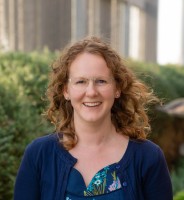Natural Catastrophes
Sustainable Living & City
Earthquakes & Seismic Hazards
Resilient Infrastructure & Safety
Green Building & Architecture
Post-Doctoral Fellowships
Italy
2017.07.31
Earthquake resilience : towards safer buildings
Helping building safer buildings and improving existing ones
The project’s preliminary missions will indeed consist of a series of experiments. The first sequence will concern the analysis of existing experimental data from laboratory tests of post-earthquake damage, including the 2009 L’Aquila earthquake. The second series consists in new experimental testing of both existing and future types of infills in RC buildings. Once these steps have been completed, the project’s ultimate goals are the proposal of a reliable modelling approach to assess the vulnerability of new and existing RC buildings and the study and proposal of both new construction and retrofitting strategies to limit damage to infills.
« RC buildings are particularly common in earthquake-prone areas. It is thus crucial to provide an as comprehensive as possible knowledge of all the vulnerability aspects of these structures », Dr. Maria Teresa De Risi stresses. « Due to the heterogeneity of infills typology and the large number of modelling issues to deal with, the road to a correct assessment of their performance is still long », she acknowledges. Her project proposes to perform an important step forward towards this objective.

Maria Teresa
DE RISI
Institution
Polytechnic School of Base Science - Faculty of Engineering
Country
Italy
Nationality
Italian
Related articles
Sustainable Living & City
Climate Change
Climate Adaptation & Resilience
Urban Planning
Resilient Infrastructure & Safety
Environmental Justice
Post-Doctoral Fellowship
Australia
2023.06.20
Indicators for Climate Resilient City Planning
Expected start date:June-2023 Cities contribute enormously to global greenhouse emissions and are key drivers of climate change. By the same... Read more

Melanie
LOWE

